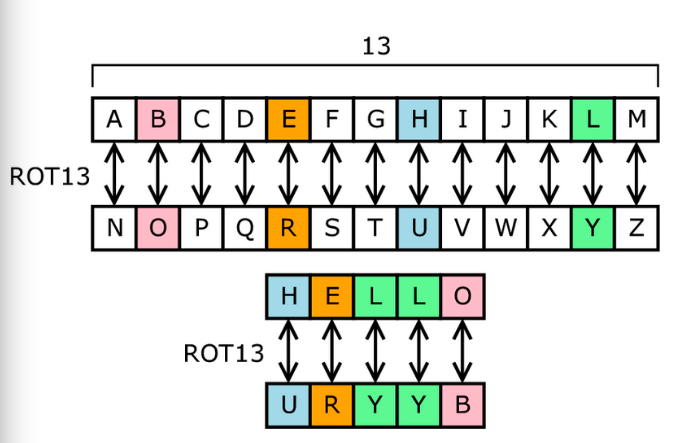In the modern digital landscape, where data breaches and cyber threats proliferate, the importance of cryptography cannot be overstated. Cryptography, the art and science of securing information, utilizes mathematical principles to transform chaos into structured code. It is a formidable intersection between mathematics and information security, ensuring the confidentiality, integrity, and authenticity of data. The mathematical underpinnings of cryptography are not merely adjuncts but profound collaborators that empower data protection paradigms.
At its core, cryptography is fundamentally concerned with the problem of securing communication. The basic premise revolves around the encoding of messages, or plaintext, into an obscured format—ciphertext—using various mathematical algorithms. To deconstruct this transformation, one must first understand the essential elements involved: algorithms, keys, and the underlying mathematical structures that govern their functionalities.
When discussing algorithms, one cannot overlook the significance of modular arithmetic, number theory, and finite fields. These mathematical frameworks form the foundation of most cryptographic systems. For instance, the widely acclaimed RSA algorithm—a public-key cryptosystem—relies heavily on the properties of prime numbers and their computational challenges. The robustness of RSA stems from the difficulty of factoring large composite numbers into their prime constituents. This asymmetry between encryption and decryption creates a secure channel for communication, rendering eavesdropping ineffective without the appropriate decryption key.
The cornerstone of cryptographic security is the cryptographic key—a string of bits that governs the transformations of plaintext to ciphertext. It epitomizes the need for secrecy and specificity in cryptography. Keys can be symmetric, where the same key is used for both encryption and decryption, or asymmetric, in which different keys are employed. The choice of key mechanism can significantly influence the security parameters of a cryptographic system. For symmetric algorithms, the challenge is to maintain the confidentiality of the key. Conversely, asymmetric algorithms promise more straightforward key distribution but incur greater computational overhead, emphasizing the trade-offs between security and efficiency.
In the realm of symmetric encryption, the Advanced Encryption Standard (AES) serves as the gold standard. AES operates on blocks of data and employs principles of substitution and permutation, which are heavily influenced by combinatorial mathematics. The intricacies of AES revolve around its key size—128, 192, or 256 bits—each ensuring varying levels of resistance against brute-force attacks. The mathematical transformations inherent in AES create diffusion and confusion, fundamental tenets that obscure relational patterns within the plaintext.
As we delve deeper into cryptographic methodologies, it becomes apparent that sophisticated mathematics not only fortifies security but also gives rise to intriguing phenomena such as homomorphic encryption. This avant-garde concept permits computations to be performed on ciphertexts without decrypting them, a powerful attribute that allows for privacy-preserving data analysis. Such capabilities can revolutionize fields like cloud computing, where sensitive data can be processed without endangering privacy. The limitations of traditional encryption methods pose challenges, but the mathematical explorations within homomorphic functions endeavor to ameliorate these concerns.
Moreover, elliptic curve cryptography (ECC) represents another paradigm shift in securing digital communications. Unlike traditional methods that rely on large key sizes to ensure security, ECC leverages the algebraic structure of elliptic curves over finite fields. The result is enhanced security with significantly smaller keys, fostering efficiency while maintaining robust security. The marriage of abstract algebra and cryptographic protocols illuminates pathways to improved performance in constrained environments, such as embedded systems and mobile devices.
Beyond the intricacies of keys and algorithms, the question of authentication emerges as paramount in cryptographic discussions. Digital signatures represent an amalgamation of mathematical principles that not only ensure the authenticity of the sender but also maintain message integrity. Through the process of hashing, a unique representation of a message is generated, which, when combined with a private key, produces a signature verifiable by anyone possessing the public key. This harmonious use of mathematical constructs facilitates trust across digital transactions, fostering confidence in exchanges that would otherwise be fraught with risk.
As cryptography continues to evolve, the challenge of quantum computing looms—a specter that threatens to dismantle established assumptions about security. Quantum algorithms, particularly Shor’s algorithm, have the potential to break widely used cryptographic schemes, necessitating an urgent reevaluation of cryptographic standards. In response, researchers are exploring post-quantum cryptography, where lattice-based, code-based, and multivariate cryptographic principles are being scrutinized. The quest for resilient frameworks in the face of quantum supremacy underscores the dynamic nature of mathematics in cryptography.
In conclusion, the intricate dance between chaos and structure within cryptography is a testament to the power of mathematics. Its ability to empower secure communications through advanced algorithms and key systems reflects a profound synergy that is continuously evolving. As threats to data security become increasingly sophisticated, the mathematical foundations of cryptography will remain paramount. They offer invaluable insights, not just into securing data, but into understanding the very principles that underlie trust in modern society. This transformation from chaos to code is not merely technological; it is a philosophical shift that challenges us to reassess our perceptions of privacy, security, and trust in a digital age.









Leave a Comment